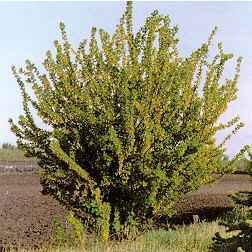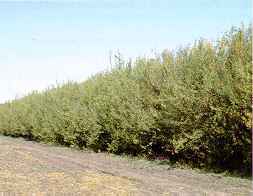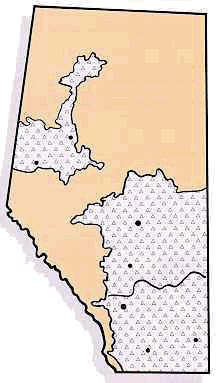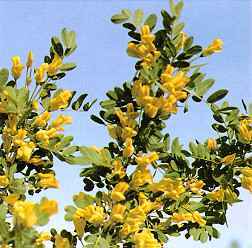| | Plant characteristics | Nitrogen fixing | Site preference | Hardiness | Uses | Problems | Diseases | Insects | Pruning


Scientific Name: Caragana arborescens Lam.
Plant Characteristics
This plant is native to Siberia, from Russia through to Northern China. It is planted extensively throughout the Canadian Prairies.
Caragana has an upright growing habit. Can be multi-branched or single - stemmed. Caragana has a rapid growth rate when young and slows down when older. This shrub is erect and branches seldom spread, until the shrub is old.
Caragana can reach a height of 3 to 5 m (10 to 16 ft) at maturity, with a spread of 3.5 m.
Caragana is a long lived, tall hedge plant. It can live 50+ years. Its growth rate can range from 15 to 45 cm (6 to 18 in.) a year till maturity if growing conditions are ideal.
Leaves - The leaves are 7 to 13 cm (3 to 5 in.) long and arranged alternately on the stem, with each leaf composed of 8 to 12 oval leaflets ranging in length from 2 to 2.5 cm (1 in.). The leaflets are usually darker green on the upper surface with a pale green underside, edge smooth, shape elliptic, apex round, base round.
Flowers - Yellow flowers appear early in the season forming a pod in late June or early July. Pods are 3.5 to 5 cm (1.5 to 2 in.) long. As the pods ripen they crack and burst, spreading seeds.
Bark - Bark is olive green and smooth. Short spines are present on the stem.
Nitrogen Fixing
Caragana is a legume and roots are usually nodulated with nitrogen fixing bacteria.
Site Preference
Caragana is able to thrive on a wide variety of soils and under tough growing conditions. Caragana is unable to survive on sites where repeated flooding occurs. It prefers a relatively dry to moderate dry soil, on well drained sites can tolerate some saline conditions, and is very drought tolerant.
Caragana prefers full sun, but can tolerate some shade.
Hardiness
Extremely winter hardy.
.


Uses
Should be planted in a single row field windbreak or roadside belt, with a planting distance of 30 to 60 cm (1 to 2 ft) in the row. In multiple row shelterbelts it is a recommended hedgerow for the windward side of the belt at 5 to 8 m (17 to 26 ft) between rows. Caragana provides cover for upland game. It can also be used for flowering hedges and screen plantings.
Problems
Caragana produces large numbers of seeds, which if not controlled can and may become a weed problem. Breaking of stems can occur with heavy snow loads.
Diseases
The leaves are subject to leaf spot diseases that can defoliate the shrub in late summer in moist areas of Alberta.
Insects
Subject to aphids, spider mites, blister beetles and grasshoppers causing partial or complete defoliation.
Pruning
Side trimming a caragana shelterbelt encourages new growth and prolongs its lifespan. Mature caragana should not be trimmed to less than 3 m in width.
Top trimming caragana can reduce the height of old weak branches, and encourage new growth. Caragana can be cut back to ground level for renovation.
.

Shelterbelts Varieties for Alberta provides information on a number of other trees and shrubs than may be suitable for shelterbelts.
Visit our website directory for the Reforestation Woodlot Listings |
|